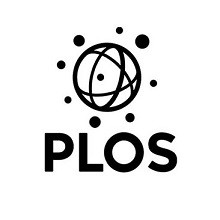
نتایج ویرولوژی و ایمونولوژیکی قطع درمان در افراد مبتلا به HIV-1 واکسینه شده با MVA-B
چکیده
مناسب ترین نقطه پایانی در واکسیناسیون درمانی HIV ، ارزیابی زمان بازگشت ویروس یا مدت زمان کنترل پایدار ویرمیای با سطح پایین پس از قطع درمان cART است. با این حال، قطع درمان های ساختاری (STI) برای بیمار بی خطر نبوده و پیش بینی کننده های قابل اطمینان از بازگشت/ کنترل ویروس پس از واکسیناسیون درمانی HIV-1، برای اطمینان از ایمنی بیمار و راهنمای گسترش واکسن های درمانی به شدت مورد نیاز است. در اینجا، پارامترهای ایمونولوژیکی و ویروسی شناسی را به همراه پویایی بازگشت ویروسی پس از STI در یک آزمایش واکسیناسیون فاز I از واکسن چند ظرفیتی MVA-B برای تعریف پیش بینی کننده های کنترل ویروسی در کنار یکدیگر قرار دادیم. پارامترهای بالینی، DNA پیش ویروسی، ژنتیک HLA میزبان و میزان ایمنی هیومرال و سلولی مورد ارزیابی قرار گرفتند. تجزیه و تحلیل اثر غربالگری با مقایسه توالی های ویروسی قبل از درمان با ویروس های پیشرفته بعد از STI انجام شد. یافته های ما نشان داد که یک DNA HIV-1 پیش ویروسی ضعیف در ابتدای مطالعه به طور مستقل با دو پارامتر ویرولوژیکی همراه بود، تاخیر در بازگشت RNA HIV-1 (p = 0.029) و پیک پایین تر ویرومیا پس از قطع درمان (019/0 = p). کاهش پیک ویرمیا با کاهش تعداد پلی-مورفیسم های مرتبط با آلل کلاس I HLA در توالی های Gag در جمعیت ویروس های برگشتی رابطه مثبتی داشت (012/0 = p). یافته های ما نشان می دهد که سطح DNA پیش ویروسی و تعداد پلی مورفیسم های GAG مرتبط با HLA ممکن است بر نتیجه بالینی STI تاثیرگذار باشد. مشارکت این پارامترها در آزمایشات واکسیناسیون درمانی در آینده ممکن است به طراحی ایمونوژن خالص شده و دستیابی به روش های ایمن تر STI کمک کند.
Abstract
The most relevant endpoint in therapeutic HIV vaccination is the assessment of time to viral rebound or duration of sustained control of low-level viremia upon cART treatment cessation. Structured treatment interruptions (STI) are however not without risk to the patient and reliable predictors of viral rebound/control after therapeutic HIV-1 vaccination are urgently needed to ensure patient safety and guide therapeutic vaccine development. Here, we integrated immunological and virological parameters together with viral rebound dynamics after STI in a phase I therapeutic vaccine trial of a polyvalent MVA-B vaccine candidate to define predictors of viral control. Clinical parameters, proviral DNA, host HLA genetics and measures of humoral and cellular immunity were evaluated. A sieve effect analysis was conducted comparing pre-treatment viral sequences to breakthrough viruses after STI. Our results show that a reduced proviral HIV-1 DNA at study entry was independently associated with two virological parameters, delayed HIV-1 RNA rebound (p = 0.029) and lower peak viremia after treatment cessation (p = 0.019). Reduced peak viremia was also positively correlated with a decreased number of HLA class I allele associated polymorphisms in Gag sequences in the rebounding virus population (p = 0.012). Our findings suggest that proviral DNA levels and the number of HLA-associated Gag polymorphisms may have an impact on the clinical outcome of STI. Incorporation of these parameters in future therapeutic vaccine trials may guide refined immunogen design and help conduct safer STI approaches.
چکیده
مقدمه
مواد و روش ها
بیماران و نمونه ها
آزمایش I FNg ELIS POT
تشخیص آنتی بادی
تعیین ذخایر و viremia باقی مانده
تجزیه و تحلیل آماری
نتایج
بازگشت ویروسی تاخیری در واکسن های MVA-B و افزایش پاسخ های ایمنی سلولی و هیومرال اختصاصی HIV پس از قطع درمان
تجدید مخزن ویروسی پس از وقفه درمانی
هیچ شاهدی برای فشار قوی انتخاب ایمنی بر بازشگت جمعیت ویروسی در طی STI وجود ندارد
DNA پیش ویروسی همراه با زمان بازگشت و پیک بار ویروسی پس از قطع درمان
بحث
Abstract
Introduction
Material and methods
Patients and samples
IFNg ELISPOT assay
Antibody detection
Reservoir and residual viremia determinations
Sieve analysis
Statistical analysis
Results
Delayed viral rebound in MVA-B vaccinees and increased cellular and humoral specific HIV immune responses after treatment interruption
Viral reservoir is replenished after treatment interruption
No evidence for a strong immune selection pressure on rebounding viral population during STI
Proviral DNA is associated with time to rebound and peak of viral load after treatment interruption
Discussion
- ترجمه فارسی مقاله با فرمت ورد (word) با قابلیت ویرایش، بدون آرم سایت ای ترجمه
- ترجمه فارسی مقاله با فرمت pdf، بدون آرم سایت ای ترجمه
